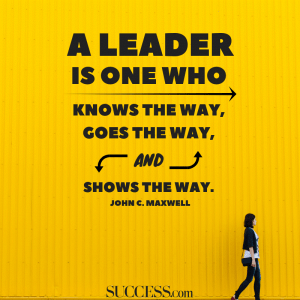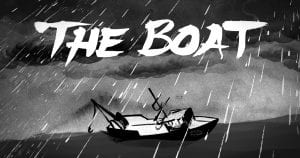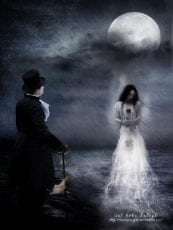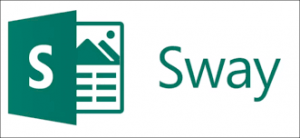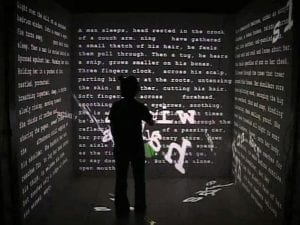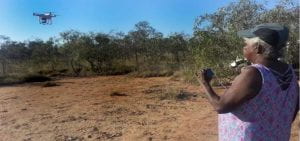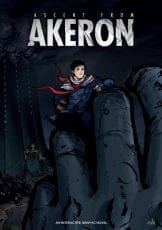Professional Reflective Portfolio

My Personal Philosophy
An effective teacher librarian (TL) is intrinsically motivated to provide an information-rich environment that supports lifelong learning, community and diversity. They have an enthusiasm for learning and are committed to fostering and maintaining professional relationships with students and colleagues. A TL embraces change, understands that education needs to be flexible and ensures that the library they oversee reflects this. An effective TL leads from the middle, fostering and facilitating information processing skills, professional development and information literacy in all its forms. They are professional in all their dealings, are avid supporters of their school and are committed to assisting others.
Introduction
My love of reading inspired me to apply for a casual position in a school library while also undertaking casual relief teaching. My first project was to oversee the move to generfying the fiction collection at both campuses. I thoroughly enjoyed this process, collaborating with staff and students to ensure a system that worked for all. This project awoke my interest in pursuing a career as a teacher-librarian (TL).
Consequently, I was offered a position as a teacher-librarian in the same school—a year after which I began my studies with Charles Sturt University. Last week I signed a 12-month contract heading up the library.
The evolving role of the Teacher Librarian
I am fortunate to be in a position to say that my drive and determination are the only limits to my role as a TL. The school where I am employed in values libraries and teacher librarians. From the beginnings of my journey in ETL401 when I saw the role as one of caretaker to today, where I believe the TL is essential to the smooth operation of a school (Taylor, 2019a, para. 1). My understanding of a TLs role has evolved significantly and what can be achieved in that role to benefit students fills me with excitement.
ETL401 highlighted for me the impact a TL can have on the overall literacy and wellbeing of the students (Taylor, 2019a, para. 2). According to a study, NAPLAN results are higher at schools that employ a TL (Hughes, Bozorgian, Allan, & Dicinoski, 2013). TLs can provide the skills students need to be digital literate, teach them information literacy, inform a love of reading and offer a safe and enriching environment. I have been working on the roll-out of a junior school reading program. Ability is measured, texts chosen at ability level, comprehension quizzes are taken, and data is evaluated and aligned to the curriculum outcomes. Intervention and extension programs can then be put in place. It is hoped that by targeting reading, literacy outcomes will increase school-wide.
(School-based affirmation from the year 7 English teachers in response to my help with the reading program)
ETL504 then supported and expanded my viewpoint considerably. When a TL can work collaboratively across the faculties, they can assist in providing a school environment that supports students’ needs by supporting teachers. The first step I learned was the establishing of good relationships with colleagues and framing their perception of the role of a TL (Taylor, 2019g, para. 1). I consider it good practice to informally touch base with at least one teacher a day to discuss what they are currently working on in class and share with them the services the library could provide to assist them. As Bishop (2011) suggests, showing an intrinsic interest in what teachers are teaching is beneficial to building effective teams throughout the school.
(Email chain from a Humanities teachers in response to assistance given in planning a collaborative lesson.)
Recently a science teacher who was looking to teach her students correct APA referencing asked if I was a ‘teacher, teacher’. She was trying to determine if I could teach a class without supervision. I was a little surprised by the question but realised quickly that I had further work to do in building relationships with my colleagues. As Bishop (2011) highlights, a school librarian needs to assume a leadership role in informing others about their role. It is an ongoing job.
As I enter a new stage, that of Head of Library, I am contemplating how ETL504 shaped my perceptions of the role of a TL as a leader within the school. To quote John C. Maxwell from my blog reflection of the time, “A leader is one who knows the way, goes the way, and shows the way”, (Taylor, 2019e, para. 2). While I still currently agree with this quote, it has developed significantly. Today I find that I lean more towards quiet leadership or leading from the middle (Gottlieb, 2012). A TL, even without a leadership position, can identify areas that need attention, such as professional development and information literacy (Taylor, 2019f, para. 2). Leading from the middle allows me to be a quiet force of change, to see myself and others rise to their potential (Gottlieb, 2012). In my new role, I will oversee three staff members. I have no desire to ‘lead’ them in the traditional sense; instead, I want to guide them to be the best they can be for themselves and their role in the school community.
As the role of a TL evolves in my mind, I realise I will wear many hats for many different occasions. There is no simple role description for a TL. This I know all too well as I am currently trying to undertake this task – a role description for both a TL and the Head of Library position at my school. The Australian School Library Association [ASLA] includes a useful description to start with (ASLA, 2019). The TL is a curriculum leader, working with senior staff to create a shared vision for information literacy for the school; an information specialist, providing access and assistance to information resources; and a service manager; ensuring the day to day procedures of running a library are running efficiently. To add to this, a TL is a collaborator with colleagues, a collegial member of the TL community, and a wellbeing facilitator.
Policies
Throughout my studies, one area that stood out quite significantly for me was the benefits of a good collection development policy. Though contentiously my head of library and another TL, I worked with disagreed (Taylor, 2019d, para. 4). They had previously had a collection development policy that had only ever gathered dust. They no longer saw the value in the document. I was told that it was unnecessary as we all know what we need to do with the collection already, no need to write it down. This was in opposition to what I was learning about a policies usefulness in my studies.
It was ETL503 that brought collection development policies to my attention, to begin with. After reading the Reading Fundamentals of Collection Development and Management by Johnson and Selecting Resources for Learning by Hughes-Hassell and Mancall, I was surprised that a document like this wasn’t utilised in our library (2018; 2005). I question in my blog how could I possibly make a well-considered, relevant purchase that would be a good investment for the users of my library without such a document to guide me (Taylor, 2019d, para. 2)? I do acknowledge that the current library staff do know what to do with the collection, but this fact is changing. The recent retirement of the head of library illustrates this change along with the collective age of library technicians. It was apparent to me that a document should be put together utilising our current staff’s knowledge so that future staff can use these same practices.
Reflecting on ETL503 in my blog, I stated my plan to complete a policy to draft form and share it with the head of library to garner her thoughts (Taylor, 2019d, para. 5). This I have now completed. The draft collection development policy has been seen and edited by both the other TL and the outgoing head of library. Moving forward in my new role will see me share this document with library staff and see its use in our day to day dealings to test its usability and guide the drafting process until it is a reliable working document.
Two further documents complimenting the collection development policy uncovered while studying ETL503 was a procedures guide and selection criteria policy. Both of which our school library does not have. A situation I am longing to change. I realise there is a lot of areas I don’t have full knowledge of moving into my new role. Purchasing is one of those areas. While we currently employ an acquisitions officer and the outgoing head of library has in the past trusted his judgement when it came to purchasing, I would like to have an overview of how he makes his selections to guide my own (Taylor, 2019c).
According to Hughes-Hassell and Mancall (2005), a library should be following a selection criteria to ensure whoever is making the suggestions, has a clear picture of the curriculum and the units being covered in the academic year. As one of my goals for my new position is to work more closely with teachers to align our collection with the curriculum, I will be looking to make many new additions. Therefore I will need a solid selection criteria policy to guide me. I realise how far I have come in the past two years looking back on my blog post Fiction vs non-fiction where I reflect that I am happy and feel fortunate to be able to make purchasing suggestions (Taylor, 2019b). I no longer want to make suggestions; I want to make smart, well throughout, considered purchases that will benefit the students academically and otherwise.
Moving forward, I plan to alter the general selection criteria table I adapted and used for my first assessment piece for ETL503, from the Hughes-Hassell and Mancall model (2005). It was straight forward to follow and makes sense to me to continue to employ that model though adapted for our school library situation. To properly support the selection criteria and collection development policy, I need to compile a procedures document. New staff coming into the library should not be left wondering how to do their job, as I was when I started (Taylor, 2019c, para. 1). As stated by Johnson (2018, p.50) new librarians, even those with experience would benefit from a policies and procedures manual.
Various procedures in our library have been documented in the past though in a rather haphazard manner. The individual files were all stored in different locations depending on what area of the library the procedure belonged. I aimed to gather and update all the existing procedures and have the library technician’s document, photograph and video the missing procedures with the result being a single electronic working document that would be easy to navigate and utilise when required.
Remote learning gave me this opportunity. The head of library went on long service leave, and I was designated in her place. Without the day to day work with the students, the library staff had more time to compile and document their procedures, uploading them for me to edit and refine. While this task is ongoing and may take some time to complete to a satisfactory standard, I believe it’s a task worth completing.
Digital literacy
Surprisingly, given my choice of career, I love to read, and I will read across the genres and on multiple platforms; print and digital, sometimes simultaneously (Taylor, 2020a, para. 1). While our library has not yet included digital fiction in our collection, we utilise interactive digital textbooks. So I was very excited to undertake the elective INF533 Literature in digital environments as part of my studies and expand my knowledge of digital literature in all its forms, not just eBooks. I began the unit concerned about the quality of digital resources I had previously been exposed too, and that I needed to learn to locate and curate quality resources for my students. Leu, Forzani, Timbrell & Maykel’s (2015) comment that the online environment is a forest filled with new literacy ‘trees’ and it is up to teachers to ensure the right trees are chosen, struck home for me. I need a solid understanding before I can recommend these resources, and so began my exploration of online digital literacy.
Conducting the digital literature reviews was a valuable exercise in beginning to build my knowledge. I located three vastly different resources, an interactive graphic novel, a digital poem and a digital touch book. The process of reviewing them saw me take into consideration the story, its readability, the animation and special effects, use in the classroom and links to the curriculum. Giving me an overall picture of the resource and its usefulness in a school setting. I was beginning to learn how to find the right ‘trees’. Following this assessment, I continued to search and uncover digital resources to fit curriculum needs. A particular request from a history teacher saw me locate and review SBS’s interactive graphic novel ‘The Boat’. I was able to provide her with the review and link, so she was able to integrate it into her unit of work on the Vietnam War.
With my new-found knowledge, I sat down to my next assessment piece, producing an interactive digital story of my own. As I also teach a year 9 English class who were undertaking the poetry of Edgar Allen Poe at the time, I decided to channel my project in that direction to ensure its relevance. After extensive research, I decided on the use of Microsoft’s platform Sway to produce my story, which I combined with images and audio clips. My original plan was to give the digital version of the story to those students who had processing difficulties and language disorders. Therefore the font used was Dyslexic friendly (Taylor, 2020b, para. 4). In the end, after sharing it with the other year 9 English teachers, the digital story of Annabel Lee was given to all students. It was very timely as we had been forced into remote learning due to the Covid-19 pandemic. Being able to provide the resource for the students at home allowed the team to be more confident of the students grasping the intricacies of the poem that wouldn’t have otherwise been possible in an online environment.
(My digital story)
(School-based affirmation from the year 9 English teachers in response to using the digital story “Annabel Lee’)
My aim moving forward with my new role is to create a bank of this type of resource. Locate where possible, create when necessary. Using this type of resource with a class taught me many things, not least of all that many students have a preference for digital literature. Scharaldi, in her blog (2020) suggests that digital text provides students with the tools they need to change the format to suit their learning needs. A student can hear the words and sentences pronounced aloud if required; they can read definitions, use digital sticky notes to annotate and even change the font to suit themselves. Having a bank of these resources curated to match the curriculum would allow the teachers to cater to those students that require adjustments or if remote learning forces us to work and learn from home again, the ability of all students to hear and interact with a text. Digital texts can stimulate visual, auditory, kinaesthetic and tactile senses, making them an excellent resource for all students (Neumann, Finger and Neumann, 2016).
ASLA and ALIA Professional Standards
The closer I come to completing my masters as a Teacher Librarian (TL), the more I come to realise how little I know about the field. That said, I have learned a great deal. However, there is still so much to learn. When I read through the standards of professional excellence for teacher librarians, as set down by the Australian School Librarian Association [ASLA] and the Australian Library and Information Association [ALIA], I realise that I am progressing well (ASLA/ALIA, 2004). This document allows me to reflect on my development as a TL, guide my professional development and assist in my lifelong learning of this field.
Being able to put theory into practice daily has been extremely beneficial to me, and more than anywhere else, this is evident in my professional practice. The second of the ASLA/ALIA standards, professional practice is where I feel I am approaching an excellent standard for a TL. Nurturing an environment that the students feel comfortable in, where they feel supported in both their academic and social needs is of utmost importance to me. The desire to ensure my library incorporates these principals was first highlighted to me in ETL401; looking at the significant role the TL can play if they put in the effort. I have found my thinking on this closely aligns to the article ‘The library as ‘third space’ in your school’ (Korodaj, 2019). Korodaj (2019) discusses how the third space for her school, supports the whole child through holistic education, providing social and emotional support as well as information and skills to assist their future development. My library incorporates this ethos. There are quiet areas for study and reading, relaxing spaces for socialising with peers, and more vibrant areas for gameplay and exploration. I make it a priority to be around at recess and lunch for my students, chatting and getting to know them and guiding those that require it.
Guiding my future direction and professional development is the need to nurture my professional knowledge. The first of the three standards according to ASLA/ ALIA, this is the area I can identify as the one I am lacking when striving to attain excellence as a TL (ASLA/ ALIA, 2004). The standard is broken up into four sections, and I believe I am making strides in all four, yet I have some way to go. Gaining knowledge of the curriculum will be my next professional goal. I did cover this to some degree during ETL402, Literature across the curriculum where I learned the importance of ensuring the library’s resources and programs supported the curriculum. The next step here is to build that knowledge up and gain a deeper understanding of current assessment theories and processes in line with the standards (ASLA/ ALIA, 2004). Several teachers at my school are currently undertaking a Masters of Education (Assessment and Pedagogy) and conversing with them is highlighting my lack of knowledge of this area. I will be looking for professional reading centred on assessment theory, rubric development and data analysis.
I look forward to continuing my journey as a lifelong learner.
References
Australian School Librarian Association [ASLA] and the Australian Library and Information Association [ALIA]. (2004). Standards of professional excellence for teacher librarians. Australian Library and Information Association. https://www.alia.org.au/about-alia/policies-standards-and-guidelines/standards-professional-excellence-teacher-librarians
Australian School Library Association [ASLA]. (2019). What is a teacher librarian? Australian School Library Association. https://asla.org.au/what-is-a-teacher-librarian#:~:text=Teacher%20librarians%20support%20and%20implement,the%20development%20of%20lifelong%20learners.
Bishop, K. (2011). Connecting libraries with classrooms: The curricular roles of the media specialist. ProQuest Ebook Central. https://ebookcentral.proquest.com/lib/csuau/reader.action?docID=664534&ppg=18
Gottlieb, H. (2012, October 30). Leading from the middle: Bringing out the best in everyone. Creating the future. https://creatingthefuture.org/leading-from-the-middle-bringing-out-the-best-in-everyone/
Hughes, H., Bozorgian, H., Allan, C., & Dicinoski, M. (2013). School libraries, teacher-librarians and their contribution to student literacy development in Gold Coast schools. Incite, 34 https://eprints.qut.edu.au/60260/38/60260b.pdf
Hughes-Hassell, S., & Mancall, J. (2005). Selecting resources for learning. In Collection management for youth: responding to the needs of learners (pp.33-51). ProQuest Ebook Central. https://ebookcentral.proquest.com/lib/CSUAU/detail.action?docID=289075&pq-origsite=primo#
Johnson, P. (2018). Planning, Policies and Budgets. Fundamentals of collection development and management (pp. 77 to 111). EBSCOhost Ebooks. http://search.ebscohost.com.ezproxy.csu.edu.au/login.aspx?direct=true&db=nlebk&AN=1856983&site=ehost-live
Korodaj, L. (2019). The library as ‘third space’ in your school: Supporting academic and emotional wellbeing in the school community. Scan, 38(10). https://search-informit-com-au.ezproxy.csu.edu.au/fullText;dn=971230698213342;res=IELHSS
Leu, D. J., Forzani, E., Timbrell, N. & Maykel, C. (2015). Seeing the forest, not the trees: Essential technologies for literacy in the primary-grade and upper elementary-grade classroom. The Reading Teacher, 69(2), 139-145. https://doi-org.ezproxy.csu.edu.au/10.1002/trtr.1406
Scharaldi, K. (2020, January 30). Five reasons why struggling readers benefit from using technology. Texthelp. https://www.texthelp.com/en-au/company/education-blog/november-2017/five-reasons-struggling-readers-benefit-from-tech/
Taylor, J. (2019a, March 3). Understanding the role of a TL in schools. Jannet’s journey. https://thinkspace.csu.edu.au/jannet/2019/03/03/understanding-the-role-of-a-tl-in-schools/
Taylor, J. (2019b, April 6).(b) Fiction vs non-fiction. Jannet’s journey. https://thinkspace.csu.edu.au/jannet/2019/04/06/fiction-vs-non-fiction/
Taylor, J. (2019c, April 9). Ordering policies and procedures. Jannet’s journey. https://thinkspace.csu.edu.au/jannet/2019/04/09/ordering-policies-and-procedures/
Taylor, J. (2019d, May 5). Reflective practice for ETL503. Jannet’s journey. https://thinkspace.csu.edu.au/jannet/2019/05/05/reflective-practice-for-etl503/
Taylor, J. (2019e, July 11). My current understanding of leadership for a TL. Jannet’s journey. https://thinkspace.csu.edu.au/jannet/2019/07/11/my-current-understanding-of-leadership-for-a-tl/
Taylor, J. (2019f, August 16). A blog about a blog. Jannet’s journey. https://thinkspace.csu.edu.au/jannet/2019/08/16/a-blog-about-a-blog/
Taylor, J. (2019g, August 31). Collaboration. Jannet’s journey. https://thinkspace.csu.edu.au/jannet/2019/08/31/collaboration/
Taylor, J. (2020a, July 25). Beginning INF533 Digital Literature. Jannet’s journey. https://thinkspace.csu.edu.au/jannet/2020/07/25/begining-inf533-digital-literature/
Taylor, J. (2020b, September 4). Digital Storytelling Proposal. Jannet’s journey. https://thinkspace.csu.edu.au/jannet/2020/09/04/digital-storytelling-proposal/
